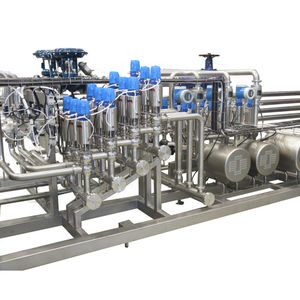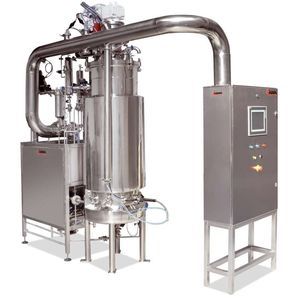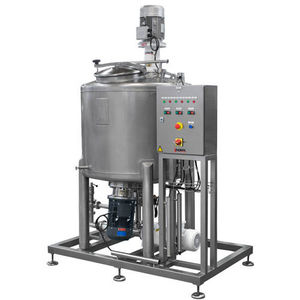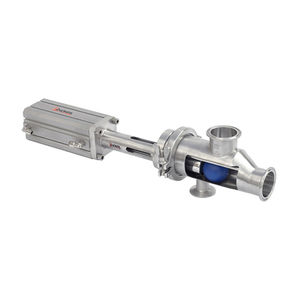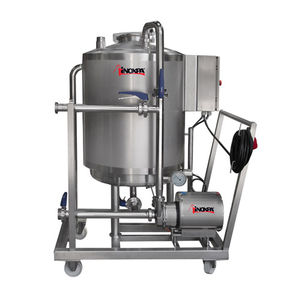

- Company
- Products
- Catalogs
- News & Trends
- Exhibitions
V blender MV seriesbatchsolidpowder
Add to favorites
Compare this product
Characteristics
- Technology
- V
- Batch/continuous
- batch
- Product type
- solid, powder
- Applications
- for the food industry, for the pharmaceutical industry, for the chemical industry, for the cosmetics industry
- Engine power
Max.: 18.5 kW
(25.15 hp)Min.: 1 kW
(1.36 hp)- Capacity
Max.: 4,200 l
(1,109.52 gal)Min.: 50 l
(13.21 gal)
Description
The V-type blender is used to produce homogeneous solid-solid mixture. Mixing is a common process step in the manufacture of products for industries such as healthcare, pharmaceutical, food, chemicals, cosmetics, detergents, colorants, fertilizers and plastics. V blenders are widely used in these industries.
Examples of materials or substances mixed in this way include pharmaceuticals, flour for confectionery, fish meal, refined or white flour, whole wheat flour, flour for coating, dextrins, enzymes, coffee, cocoa, milk powder, chocolate, gelatine, crème caramel and dessert powder, baby food, custard powder, starches, seeds, pigments, colorants, cosmetics, powdered or granulated plastics, fiberglass, etc.
The unit consists of two cylinders arranged in a "V" shape with an angle of 80°. A manually actuated inspection and loading port is provided at the end of each cylinder, allowing access to its interior. The product outlet is located at the point where the two cylinders are joined and is fitted with a manually or automatically actuated butterfly valve. The geared motor and the bearing system are located within the lateral supports holding the blender body.
The solids are introduced into the blender through the loading aperture. The mixing performance is of 50%, that is, with each turn of the blender, the product located in the two cylinders moves into the central common section, and this is repeated continuously. The speed is not high, which makes this unit especially suitable for products that need to be
maintained cold.
The mixture is discharged through a hermetically closing butterfly valve which can be operated manually or automatically.
Catalogs
No catalogs are available for this product.
See all of INOXPA‘s catalogsRelated Searches
- Dynamic homogenizer
- Batch homogenizer
- Liquid agitator
- Homogenizer for the food industry
- Solid blender
- Vertical agitator
- Stainless steel agitator
- Agitator for the chemical industry
- In-line mixer
- Powder blender
- Solid/liquid homogenizer
- Horizontal blender
- Agitator for the pharmaceutical industry
- Turbine agitator
- Homogenizer for the cosmetics industry
- Compact agitator
- High-speed homogenizer
- Vacuum homogenizer
- Automatic homogenizer
- Explosion-proof agitator
*Prices are pre-tax. They exclude delivery charges and customs duties and do not include additional charges for installation or activation options. Prices are indicative only and may vary by country, with changes to the cost of raw materials and exchange rates.

